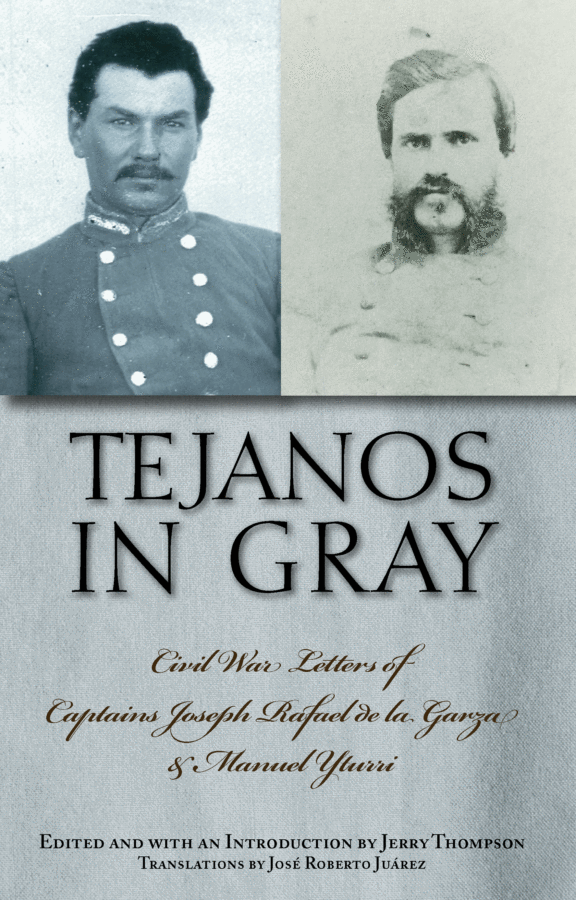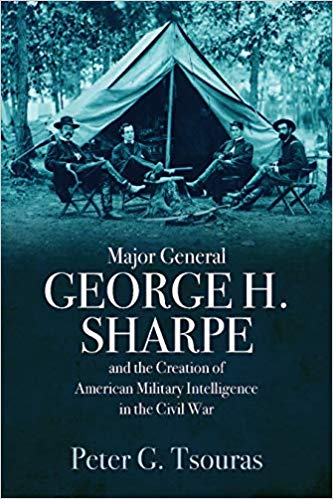Tejanos in Gray: Civil War Letters of Captains Rafael de la Garza and Manuel Yturri edited by Jerry Thompson (translated by Jose Roberto Juarez). College Station: Texas A&M University Press, 2011. Cloth, ISBN: 160344243X. $29.95.
 Historians consistently underestimate the ethnic diversity of the Confederacy. Regimental muster rolls from Texas, Louisiana, and other western states abound in German, Irish, French, and Spanish surnames. Until recently, these individuals and the groups they represent have remained largely under the radar. This is because for most of the past 150 years Confederate history has been written almost exclusively by persons of British background who had (and in some instances still have) a vested interest in promoting a distinctly Anglo-Saxon version of southern history. Another reason is that Confederate historians have hailed predominantly from the East, where knowledge of—and interest in—the West is scant. Probably no group has been more consistently ignored than the Spanish speaking population of Texas, variously described in the nineteenth century as Spanish, Mexican, or Tejano.
Historians consistently underestimate the ethnic diversity of the Confederacy. Regimental muster rolls from Texas, Louisiana, and other western states abound in German, Irish, French, and Spanish surnames. Until recently, these individuals and the groups they represent have remained largely under the radar. This is because for most of the past 150 years Confederate history has been written almost exclusively by persons of British background who had (and in some instances still have) a vested interest in promoting a distinctly Anglo-Saxon version of southern history. Another reason is that Confederate historians have hailed predominantly from the East, where knowledge of—and interest in—the West is scant. Probably no group has been more consistently ignored than the Spanish speaking population of Texas, variously described in the nineteenth century as Spanish, Mexican, or Tejano.
In the past two decades several pioneering studies have pulled back this curtain of ignorance and illuminated the roles played by Tejanos in the Civil War. This small collection of letters is the latest and perhaps the most important of these studies, because it allows two of those Tejanos to speak to us directly. Joseph Rafael de la Garza and Manuel Yturri were young men from socially prominent families in San Antonio that successfully managed the transition to the new, American-dominated Texas after 1836. Garza and Yturri had much in common, besides being brothers-in-law. Both were bilingual, bicultural, and well educated. Garza attended St. Joseph’s College in Kentucky, Yturri the University of Pennsylvania. Both stayed out of the war for a year before entering Confederate service in 1862. Both were mustered into the Sixth Texas Infantry, though Yturri later transferred to the Thirty-third Texas Cavalry and, still later, the Third Texas Infantry. Both served exclusively in the trans-Mississippi and rose to the rank of captain. Sadly, both did not survive the war. Garza was killed at Mansfield, Louisiana, in 1864; Yturri returned to Texas and lived until 1913. Garza and Yturri clearly were not typical Tejano Confederates. Their wealth, education, and connections through marriage and business with the emerging American establishment in San Antonio set them apart from the thousands of other Tejano Confederates, most of whom were poor, illiterate, and unassimilated.
The forty-one letters (most penned in Spanish and smoothly translated by Jose Roberto Juarez) are largely concerned with personal and family matters, but they also provide revealing glimpses of everyday life in the Confederate army in Texas, Arkansas, and Louisiana. Unsurprisingly, they describe a dreary existence marked by tedium, homesickness, pointless marches, poor food, inadequate uniforms, and mounting disaffection. They also document the monumental incompetence of the Confederate postal system, a black hole where thousands of missives and parcels disappeared without a trace. The letters include nothing about politics or ideology but there are hints that Garza and Yturri felt they were fighting to defend Texas and, perhaps, to affirm their right to be considered Texans. For readers interested in Civil War military operations, the high point of the collection is Yturri’s detailed description of the battle of Jenkins Ferry, Arkansas, fought in October 1864.
Editor Jerry Thompson, a name familiar to students of the Civil War in the trans-Mississippi, writes in the introduction that these letters are an exceptionally valuable source of information about the roles played by Tejanos in the Civil War, and there is no reason to challenge that assertion. Anyone interested in the Civil War west of the Mississippi River will find this superbly edited book essential reading.
William L. Shea is a Professor of History at the University of Arkansas at Monticello and the author of Fields of Blood: The Prairie Grove Campaign (Civil War America).
